Don't wanna be here? Send us removal request.
Text
Go Fish: Stereotypes and Portrayal of Identity
Lesbianism and Gender Presentation in Go Fish
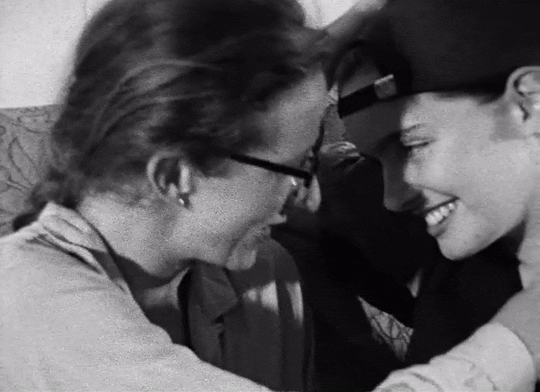
Media representation plays a large role in how society views lesbian identity. Lesbians threaten the survival of the patriarchy by decentering the desire of men, ensuing degrees of stigma and stereotypes related to their physical gender presentation and sexual preferences that is recreated and enforced in popular media (Halberstam). Queer theorist Jack Halberstam identifies in “Looking Butch” that the most present stereotype of lesbians is the butch lesbian, who through her hypermasculinity is able to make lesbianism more understandable to a straight audience. Representations of butch lesbians have been identified as negative stereotypes, as it assumes that because a woman is attracted to other women she must be masculine (Halberstam 176). Halberstam complicates this notion by arguing that stereotypes are another way for heterosexual society to define identity in excess (Halberstam 176). I believe that stereotypes can be both right and wrong at the same time, as they are one representation of a broader identity that can not accurately be reflected within one character. The butch lesbian stereotype is accurate in its representation of one subculture, yet when applied as the most valid form of gay identification it becomes reductive. Sexual labels and gendered behavior are used to distinguish the queer community, based in the assumption that to be queer is to be different. The film Go Fish, created during the new queer cinema of the early 90s, was made by lesbians Troche and Turner. This film was not created to make a direct political statement about lesbian identities, but to show a relatable representation of lesbian life. Characters in Go Fish decenter the male gaze, making it easier to divert normative feminine expectations, yet they can not escape the stereotypes of sexuality, as they are enforced in association to gender presentation and enforcement of labels.

As female queerness breaks social expectations of femininity, masculinity becomes the idealized form of lesbian presentation in Go Fish, recreating the butch lesbian stereotype Halberstam called attention to. Max, the main character of Go Fish, attempts to present masculine to feel more visible in her lesbian identity, enforcing the relation between gender nonconformity and queer sexuality. This depiction of lesbianism is intrinsically based within gendered roles and expectations, as society assumes one to be heterosexual until labeling and presenting otherwise (Gaines, 1986). Max, along with other characters, adopt masculine traits and names to attract the female gaze. The cutting of Ely’s hair is used to signal to others that she is a lesbian, showing the physical inscription of gender non-conformity as a signal of queerness. This representation idealizes the masculine lesbian as the most valid in their expression of their sexuality, as they are conforming to expectations of sexuality in opposition with gender expression to distinguish themselves from the heterosexual other. Halberstam describes the social validity of the butch lesbian as a way to make “lesbianism readable in the register of masculinity, and it actually collaborates with the mainstream notion that lesbians cannot be feminine” (177). Sexual orientation is not something that has to be physically obvious, yet stereotypes of what an ideal lesbian should look like highlight the significance placed on visibility of sexuality, delineated through gender nonconformity. These stereotypes, although frequently accurate, reduce lesbian identity to ability to be physically discernible to the heterosexual eye.
The stereotype of the butch lesbian shows how lesbianism is viewed as negating gender norms, conditioning butch characters to obey the social expectations of masculinity. Throughout Go Fish , there is an assumption of masculine and feminine lesbians as being more naturally compatible. When Ely and Max first meet, they both fall somewhere in between this gender dichotomy. While they both voice being interested in each other, neither of them initiates any romance. It is only once Ely cuts her hair into a boyish buzz and Max takes off her baseball cap to let her hair down that they truly get together, showing how gender roles and presentation impact lesbian courtship. When they both dressed in between masculine and feminine, they did not know what their relationship would look like, as they had less social scripts to go off of. Halberstam directly comments on how the couples in Go Fish are “coded as butch and femme role models, and throughout the film, serious butch-femme clothing codes are in effect” (Halberstam, 224). It is important to interject the stereotype that butch and femme couples are the most suitable, as these labels in the lesbian community are another way of recreating heterosexual assumptions within gay relationships. Even the categorization of butch and femme lesbians works to serve heteronormative ideals of the masculine and feminine as opposites that are attracted.

The butch lesbian exists within the cultural imagination serving as an antithesis to how straight women should act (Halberstam, 1998). The butch lesbian identifying character Daria challenges who can be labeled as a lesbian through having sex with a man, resulting in outrage from the lesbian community. The scene starts in a dreamlike manner with quick shots of Daria being kidnapped off the street, blurring the line between the reality of the film and the imaginary that Troche and Turner have created. The lighting is harsh, casting the shadow of the group of angry lesbians against Daria, who stands alone against a white wall. The camera flips quickly between her and the women, creating a scene of immediate interrogation. The other lesbians act as social enforcers of the rules of sexuality, evoking a sense that they represent broader societies expectations of lesbians. This scene stands out from the rest; it is a direct argument between lesbians about who gets to identify as a lesbian, showing how important sexual labels are. Labels, represented as being verified by one's physical presentation, define how society views one's sexuality (Grosz, 1994). Troche and Turner chose to have Daria, the most traditionally butch of the group, sleep with a man, challenging conceptions of the label of lesbian. Daria is a masculine presenting woman, making it easy for characters and spectators to understand her lesbian identification. Yet when Daria engages in behavior that is not associated with her sexual and gender expression, her whole identity comes into question. Daria feels confident enough in her gender and sexuality expression that she feels who she has sex with does not have to define her, yet this scene shows how significant sexual labeling is socially. Halberstam argues that to remedy queer stereotypes, “What we should be attacking in stereotypes is the attempt of heterosexual society to define us for ourselves, in terms that inevitably fall short of the ‘ideal’ of heterosexuality” (Halberstam, 180). The stereotypes that result from typical butch representation is that of a boyish, man-like, lesbian. Yet, Go Fish negates this limiting representation of a label through Darias unrestricted sexuality, showing how butches are not only masculine women but real people with expansive expressions and desires. Sexual labels are a way for heterosexual society to categorize gay identities, yet they are also important queer community identifiers, making stereotypical representations both important for visibility and reductive of queer identity.
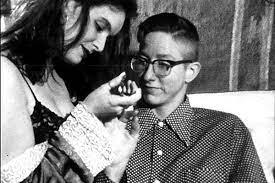
As a lesbian, I appreciated the way Go Fish was able to represent the broader social pressures behind stereotypes of lesbians. This film explicitly discusses how stereotypes of butch lesbians have impacted the ways lesbians represent and see their identities. The butch is not necessarily a reductive representation, yet when butch characters are limited to masculinity in order to be seen as valid in their identity, as seen in Daria, we verge into a simplifying stereotype. Not all lesbians identify with masculinity, and not all masculine lesbians identify as butch. Ultimately, lesbians do not need to be visible through gender non-conformity to be valid in their identity, yet expectations of gender in relation to sexuality impose a stereotype that discredits the feminine lesbian. I disagree with Halberstam that Go Fish is a negatively stereotypical “butch-femme narrative of desire”, as the film continuously recognizes the impact that gender expectations have on sexuality, resulting in this stereotype being accurate for many (Halberstam, 224). "Go Fish" is significant for its portrayal of lesbian characters and their everyday lives, offering a more authentic representation of lesbian relationships than what was often seen in mainstream media at the time. Creating a lesbian character is a way for viewers to vicariously experience a relationship, creating a more conscious acceptance, even when it materializes from a stereotyped script. Go Fish may help viewers understand the gender expectations within lesbianism, showing how butch stereotypes can be oppressive and also accurate.
Works Cited
Gains, Jane. “Looking Relations: Race and Gender in Feminist Film Theory.” Cultural Critique, no. 4, 1986, p. 59., https://doi.org/10.2307/1354334.
Grosz, Elizabeth. “The Body as Inscriptive Surface.” Volatile Bodies, 2020, pp. 138–159., https://doi.org/10.4324/9781003118381-9.
Halberstam, Jack. "Looking Butch: A Rough Guide to Butches on Film." Female Masculinity. Durham [N.C.] :Duke University Press, 1998.
4 notes
·
View notes
Text
I love this movie! What is it saying about the effects of capitalism on racial oppression?
Sorry To Bother You - Roundtable Presentation
youtube
Sorry to Bother You (Boots Riley, 2018), follows Cassius Green as he begins work as a telemarketer. After months of late rent and struggling to get by, he settles for the only job that will “hire anyone”. At first, Cassius struggles to get through to anyone over the phone and is constantly being hung up on. Everything changes when he receives some advice from an older coworker, Langston. He instructs Cassius to use a “white voice” over the phone to get customers to listen to him. Langston demonstrates his ability to put on an almost cartoonish voice that immediately masks his Blackness to anyone who can’t see him. Cassius resists at first, but once he tries it there is no going back.
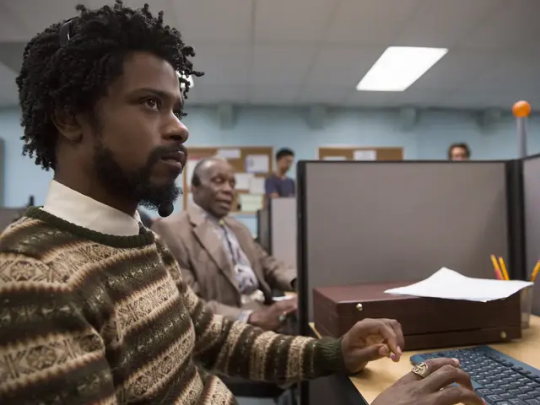
The introduction of the “white voice” is where we see the science fiction piece start to appear. The voice is completely unrealistic, clearly not the actors actually talking. It is as if their voices are being overdubbed by a squeaky overly animated white guy, and the voice is exactly the same for Cassius and Langston. Once Cassius starts succeeding at his work, his calls place him in the room with people, someone will answer the call on the toilet and suddenly Cassius is there with them, adjusting the settings on their bidet for them as he rambles about phone providers. Cassius is able to use phone to bypass his identity, creating a new imagined one through the surrealism of the film. Cassius and Langston are not just doing a voice, they are transporting themselves into another world where they escape some of the anxieties of racial identity and are able to benefit from the capitalist systems they exist within.
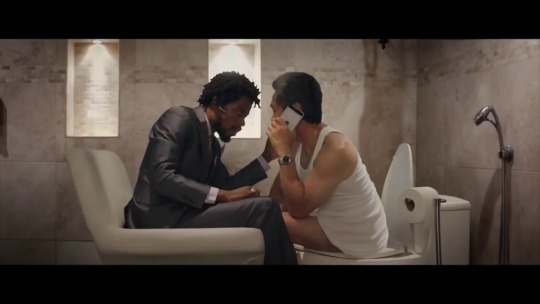
Cassius is so wrapped up in his own success that he suddenly finds himself working with his boss to create a perfectly dehumanizing workplace and against his fellow employees who are fighting for fair treatment in their field. Eventually his conscience catches up to him and he realizes he has been living in an alternate world, one that is in no way real. Sorry To Bother You presents a surrealist take on our dystopian, racist, capitalist world that makes you think about what universe you are living in.
@theuncannyprofessoro
7 notes
·
View notes
Text
What does this movie reflect of the challenges of political organizing?
Roundtable Queries: Race in the Imaginary, Born in Flames (1983)
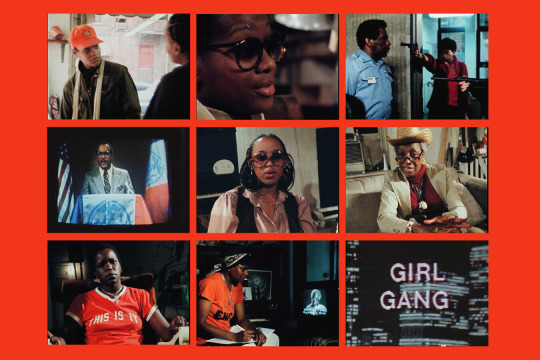
How does the film use human technologies and/or imagined alienness to establish different identities?
In spite of taking place in a dystopian future, there is no explicit depiction of advanced technologies. Born in Flames is set ten years after a peaceful revolution that has rendered America a Democratic socialist state. This supposed stride in progress has not stopped the oppressed from being marginalized. As a response to their oppressive conditions, a group of women-led community organizers take matters into their own hands with increasingly radical approaches. Writer-director Lizzie Borden's vision of the future suggests that dystopia might not be too different from present-day society.
youtube
How does film de-individualize and/or biologically reify alien characters that mimic racial prejudicial and discriminatory practices?
There are no aliens in this film, but alien identity is certainly a central theme. Women themselves are presented as somewhat alien in the ways they have been ostracized/signaled out as other. One such example is women being fired on the basis of sex. Different forms of labor are depicted from secretarial work to construction, showing the ways in which identity can be informed by one's contribution to capitalism (even if it has been repackaged as socialism).
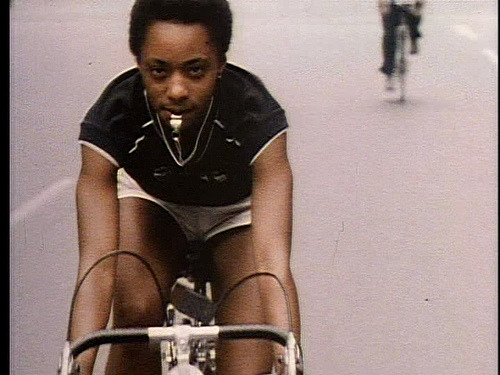
In what ways does the film depict home for the characters?
Home is shown through varying New York apartments. Outside of the tumultuous cityscape, these are places of respite. Food is served, community is engaged with, friendships are formed. I was reminded of multi-disciplinary artist Carrie Mae Weems' "Kitchen Table Series," which featured photographs of Black women in varying tableaus. Within Weems and Bordens visual landscapes, kitchens are portrayed as emblems of intimacy and identity.
How does technology inform definitions of home/land, indigenes, and aliens?
As I stated earlier, futuristic technology does not factor much into this particular film. That said, television/radio broadcasting are used to relay messages of political ideology and statehood. In one sequence, a women's group breaks into a news station and holds employees at gunpoint until they play a message about a Black community organizer who mysteriously died in prison. Born in Flames shows the power of mass media as a form of control and resistance.

In what ways do the character relations reflect anxieties of racial identity, racial mixing and/or passing, migration, and invasion and/or colonization?
As a magnum opus on intersectional feminism (before the term was coined), much of the film concerns the cultural forces that separate different groups of women. There is a group of white, female journalists who decry the "separatist" actions of more radical groups. In the end, it is unity amongst women that is the enactor of change, signaling a present-day call to action as broadcast from Borden's not so distant future.
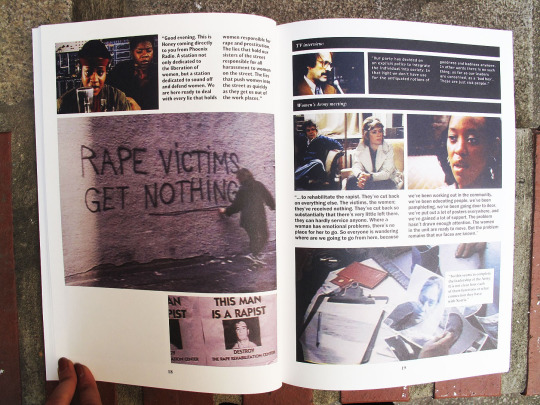
@theuncannyprofessoro
9 notes
·
View notes
Text
Are the queer characters are the ones who are alienated?
Strange Days (Kathryn Bigelow, 1995)

Strange Days (Kathryn Bigelow, 1995) is a science fiction thriller set in Los Angeles during the last two days of 1999. With the general consensus being that the end of the world is imminent: Los Angeles has devolved into a warzone of debauchery, violence, and crime. The film centers around ex-cop Lenny, who deals SQUID devices on the black market. SQUIDS are illegal devices that record peoples’ physical sensations and memories from their cerebral cortex onto a mini CD disc that allows them to be played back and experienced by anyone.
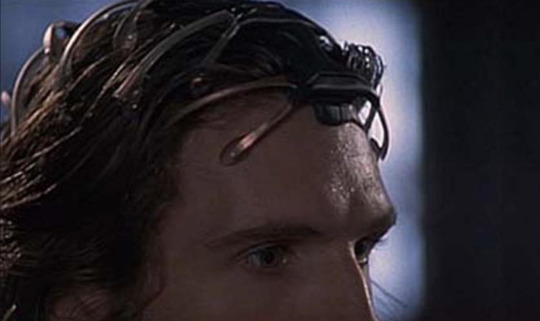
Lenny’s ex-girlfriend Faith’s friend Iris ends up recording police murdering black rapper and activist Jeriko One. The audience has only briefly been introduced to Jeriko via a speech he gives on television protesting the police state that Los Angeles has fallen into and pushing for peace. Since Jeriko’s character is not further developed before he is killed, he exists as more of a symbolic placeholder for all of the innocent black people that police have murdered. Iris is then chased by police but ends up getting the tape to Lenny before she is brutally raped and murdered. Lenny and his driver/bodyguard/friend Mace (who is also in love with him) then have to run from everyone who’s trying to kill them and Mace gets the tape of the murder to the police commissioner.
It’s interesting that even in this apocalyptic, end-of-the-world setting, racially motivated violence and police brutality are still prominent. Bigelow has discussed in interviews being motivated to begin production following impactful incidents in the 90’s such as the Lorena Bobbit trial and the Rodney King verdict and the riots that followed in 1992. Multiple of the characters in Strange Days are overtly racist (ie. the cops/murderers), but more subtle racism also permeates throughout. When trying to figure out how to get the video of Jeriko’s murder to the public, Mace and Lenny go to Lenny’s “friend” Max (who will turn out to be an awful person) for help. Max says simply that Lenny and Mace should not show the tape because there will be riots. In this moment Max is willing to silence the story of police murdering a black man to avoid causing a more than warranted uprising.
Bigelow seems to have intentionally sought to explore the intersection between race and gender as she stated that she created Mace’s character to examine "valuable connections between female victimisation and racial oppression." Mace proves to be stronger and more confident than Lenny; she repeatedly saves their lives and gets them out of tricky situations, yet she is still reduced to the role of his bodyguard/driver, and not given much of a story outside of Lenny’s world. At one point when they are in the car, she points out this dynamic saying “driving Mr. Lenny,” a reference to the film Driving Ms. Daisy (Bruce Beresford, 1989). Mace is additionally in love with Lenny because he stepped in and helped her take care of her son when the kid’s father was no longer around. Despite Mace being a strong, smart, and badass, black woman, her story is somewhat reduced to being the white man’s sidekick. She is also in love with Lenny for the entire film and when they eventually kiss at the end, it feels like she has now only existed to be his love interest.
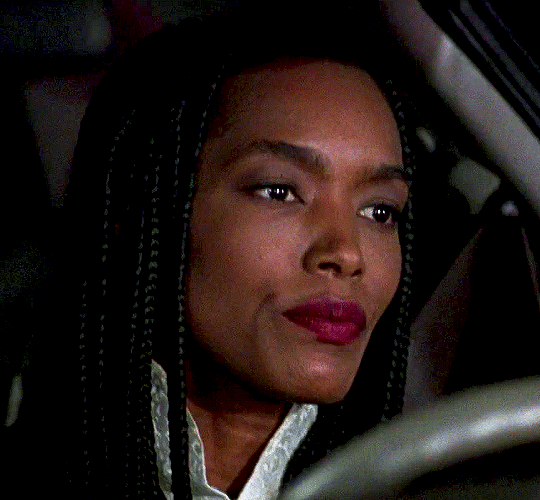
11 notes
·
View notes
Text
I gotta watch this movie! How does the humans being the group oppressed instead of the alien guys flip the script of who the other is?
La Planète Sauvage (1973) Race in the Imaginary
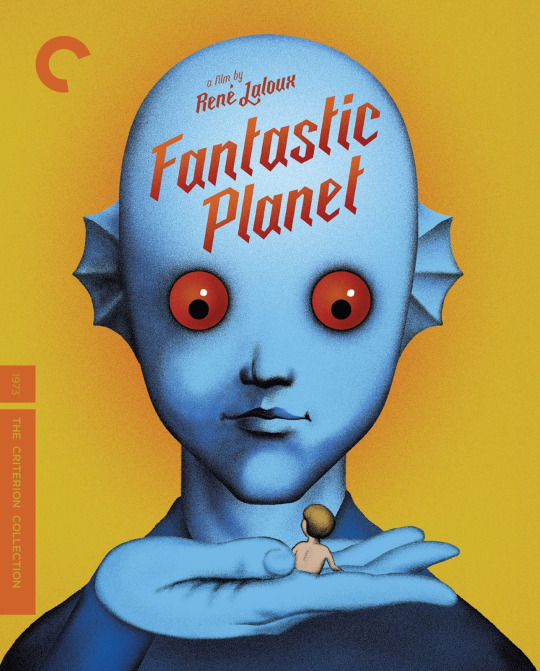
René Laloux’s La Planète Sauvage (1973), an experimental animated science fiction art film, is as strange as it is dense with implications. The politically charged dissonance of psychedelia combined with the film’s Dali-esque surreal cutout stop-motion animation universe, realized by French avant-garde artist Roland Topor, has solidified this film as a seminal work of animation and a cult science fiction feature. The film is set in the hallucinatory landscape of the planet Ygam, where gargantuan blue humanoid creatures called Draags who rule the planet enslave humans (called Oms–a play on the French homme)--Terr, an Om who has been kept as a pet since Traag children killed his mother in his infancy escapes from his child captor and bands together with a band of radical escaped Oms to resist the Draag regime and impending genocide. The film is markedly allegorical for its use of imagined alienness to establish otherness and marginalization, and the techniques the Draag use to subordinate the Oms evoke historically significant racist discriminatory practices. Simply, it feels like a movie that is bluntly about something beyond what it appears to be, and the slight heavy-handedness of its messaging reifies its goal of engaging in racial discourse.

The racial politics of Fantastic Planet are strange in that the broadness of the trenchant sociopolitical commentary imminent in the dynamic between oppressor and oppressed has led critics to draw comparisons between the plot and the narrative around “animal rights” and the (mis)treatment of domesticated animals, yet the human-ness stitched into the film’s fabric positions it as a text specifically interested in the ways humans create divisions among themselves. The Draags and the Oms, despite their vast difference in physical size, do resemble one another and take on different forms of the corporality of a human being, and for this reason and many others, Fantastic Planet seems to be a film about how we could recognize ourselves in one another and still splinter into factions and enforce senseless violent domination.
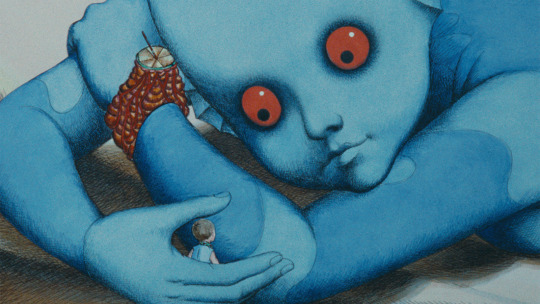
Terr’s captor, a girl named Tiwa, has given him a collar to control him as he attends “school” with her, which involves her wearing a headset that transmits facts into her brain, and a defect in his collar inadvertently allows him to learn the same knowledge as Terr, knowledge he ends up using to save the Oms. Intelligence is the gateway to capital in Ygam and the Draags are highly intellectualized beings who pride themselves on their inborn wisdom and biological superiority that allows them to far outdo the meager Oms in their knowledge–the film comments on the complications of the racialized bioessentialist understanding of knowledge that would posit that being smart, and subsequently having value, is a fixed innate biological trait. The Oms navigate the world through cunning, outwitting the Draags practically in ways they might fail to do so intellectually and the Draags and Oms counter one another in the film on what “counts” as knowledge: the Draags favor transcendental meditative practices that imbue them with highly complex perspicuity, whereas the Oms argue that their knowledge is more useful for the ways it enables them to survive despite their circumstances. The Oms are made alien not only through their physical inferiority but also because they exist in a society that was not built for them. Fantastic Planet depicts an idea of home that is stringent upon exclusivity and requires technical superiority to belong; shoring up racial politics, Fantastic Planet deploys a social constructionist standpoint that colors these divisions as the products of structural forces benefitting only those who erected them.
youtube
17 notes
·
View notes
Text
What does the idea of cloning represent?
They Cloned Tyrone

They Cloned Tyrone is a sci-fi mystery drama that follows the story of a drug dealer named Fontaine, who discovers a shocking conspiracy that his entire neighborhood is a part of. Starring John Boyega as Fountaine, Teyonah Parris as a sex worker, Yo-Yo, and Jamie Foxx as a pimp named Slick Charles, the film follows Fountaine and the gang as they try to figure out the truth while finding themselves sinking deeper into the rabbit hole of lies and secrets spread farther than they’d imagined. Fountaine, who was shot in a drive by shooting, came back the next day as if nothing had happened. Slick is shocked because he saw them murder him and immediately knows something is up. When they go to get Yo-Yo's help, they are led to an abandoned house where they find an underground lab where these scientist are running human cloning experiments. This is where they find Fountaine's dead body, the one that Slick had seen the day before.

Fountaine realizes that he is a clone and that the government is surveilling all of Glen, the fictional town in which they live. Slick finds a white powder in the lab which he figures out if being put in the chicken they eat, the hair relaxer at the salon, and in the juice they give out at the communion. Along with this, the music is also a factor of hypnotism against the black community.
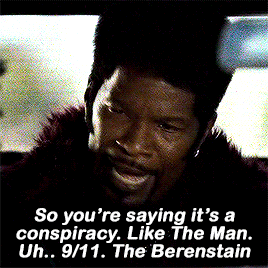
In the end it is revealed that the government has made clones of most people in the community of Glen, specifically people like Fountaine and Slick, who are drug dealers and pimps, in order to damage the well being of the people. It is revealed that these simulations are running in multiple cities around the U.S. including L.A, Chicago, and Detroit(all cities with majority Black populations). The ending shows that Fontaine, Yo-yo, and Slick are nowhere near finishing what they started. The movie deals with topics such as free will, community, and personal responsibility. They indirectly address issues that the government has set up against the black community, such as gentrification, the crack epidemic, and police brutality.
10 notes
·
View notes
Text
Do the black characters in this film face more oppression from the government, or is their race seemingly ignored?
Race in The Hunger Games
The Hunger Games (2012) is a film adaptation of the critically acclaimed novel series by the same name, followed by three more movies and a prequel movie that came out this year. The basic concept of the story is a nation called Panem that has been divided into districts, each responsible for a specific need in the nation (electricity, coal, fishing, transportation, etc.). In districts 1-12, number 1 is the richest district while 12, the poorest district, is the home to main characters Katniss and Peeta. Most of the characters in the films are white with the exception of a few characters. Even in the crowd shots in the film the background actors are majority white.
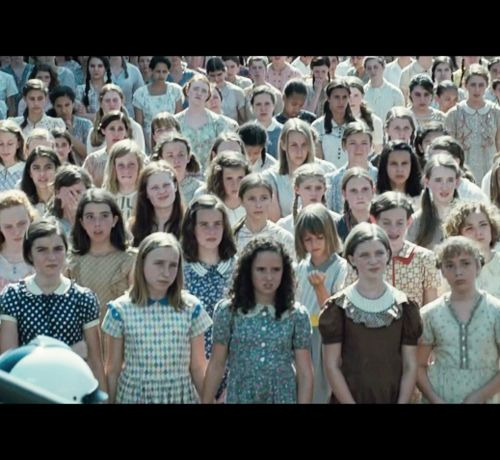
District 11 is a district made up of mostly black people, with their focus on agriculture. It is said to be reflective of the American south, but Collins received a lot of criticism for putting all the black people in one district and having their focus be crops because it is reflective of slavery. Two Hunger Games tributes come out of District 11: Rue and Thresh, brother and sister. Rue forms a strong bond with Katniss, but eventually dies, which is a driving force for Katniss to rebel against the Capitol later on. When Rue dies, District 11 revolts, and are met by violence from the “Peacekeepers” which are the story’s representation of police.

Dividing the nation into districts is how Suzanne Collins emphasizes the different identities and different opportunities; the richer districts receiving better opportunities and treatment from the government. But, Collins has received criticism for putting social class/monetary value as the central cause for oppression in this futuristic society, as some critics have argued the emphasis on class complies with the liberal tendency to reduce “class to inequality in order to deflect attention from racial disparities.” Even so, placing all the black people in one district and putting them in the second-poorest district is quite weird. If Collins’ point was being realistic or “color-blind,” it would make more sense to make all districts ethnically diverse. This immediately ostracizes the black characters as the other characters and the film’s audience associates their race with their social standing.
Since District 12 is the poorest, it receives little attention from Panem’s government. But, District 11 is overly patrolled by the “Peacekeepers,” reflecting the over-policing of black communities in the U.S. “During the Games, Rue tells Katniss that the District 11 citizens are all forced to work on the farms for the harvest and are whipped for resisting or stealing the food. Katniss realizes that perhaps there are benefits to being the poorest district, since the Capitol ignores most of what goes on in District 12. What she has stumbled onto is white privilege: she may be poor, but her skin color gets here more freedom than Rue gets. This important detail, however, receives almost no attention in the book and is completely left out of the film.” (A Game of Race, Ian Pultz Earle). The technologies/lack of technology that separate district 11 from others are the surveillance state that they live in which is very different from district 12 which is completely neglected by the government.
6 notes
·
View notes
Text
I also really appreciated the nuance Adaze was portrayed in. I assumed her and her uncle were going to fall in to a power struggle over the company, but I loved the way they ended up working together. Her uncle supported her instead of working against her, creating a new representation of female power.
Lionheart Viewing Response

Lionheart (2018) follows Adaeze's journey to prove herself and take over her fathers company after he develops some detrimental health problems that force him to take a step down. Lionheart represents a professional, driven, intelligent and capable Nigerian woman, which is a step forward for positive representation. Adaeze is capable and deserving of the role she she plays in a very male-dominated world and industry. In her piece, "Signs of Femininity, Symptoms of Malaise: Contextualizing Figurations of ''Woman'' in Nollywood," Jane Bryce quotes Adeleye-Fayemi. She states that "film and television are ruled by the "mirror-image paradigm," which dictates that, in order for audience expectations to be fulfilled, women are portrayed as either "powerful and dangerous" or "long-suffering" and "in this 'either/or' way of portraying women, women are shown not just as society perceives them, but as society expects them to be"." I think Adaeze is portrayed as a person to take seriously and a force to be reckoned with, while also holding complexity and lightheartedness. We see different sides of her in her relationship to her family and her relationship to her work. She is not an overly serious figure. She is scheming with her uncle and having ridiculous, comedic interactions while also holding her own and ultimately leading the company to success.
@theuncannyprofessoro
6 notes
·
View notes
Text
I think this is a very insightful comment in terns of the influence of time on her character. She is entrenched within past in present traditions of her anscestors, yet simultaneously is contradicting them.
Whale Rider viewing response
Niki Caro's Whale Rider, a 2002 New Zealand drama film based on a book by the same name, explores what tradition and hope can offer one another. The character of Paikea, whose traditional grandfather Koro is convinced brought misfortune to the tribe since her birth, has within her a deep-seated generational memory, an ancestral force that compels her at the film's climax to approach the stranded alpha whale and ride it back into the ocean as the founder of her patrilineal tribe once did. She engages with tradition interestingly here, reaching through her lineage and pulling herself towards a mythological coming-home that empowers her to entrench herself in her tribe, while simultenously reforming this tradition and sacralizing the new. The film is invested in Pai's scrutiny of tradition as she watches Koro teach the village boys how to use a taiaha, hoping to train a new leader, and secretly learns to use it herself. She is inventive and determined, and with ease she conquers the pillars of tradition, holding past and future in each of her hands, thoughtfully eschewing what doesn't serve her and still clutching onto some veneration of the past. She is frustrated with Koro's refusal to accept her as the rightful future leader she knows herself to be because she feels this ancestral memory within her that she is meant to lead her tribe--Whale Rider tells a story where memory is magic, and this magic is not so simple as to be a nonsensical calling from an ethereal plane but is instead the throughline connecting Pai to those who came before her. Her memories are, in a way, not her own, and these instincts motor her through the difficulties of repeatedly being disallowed from participating in the cultural practices that would enter her into leadership. Her journey through indigenous temporality and ancestral memory calls her to lead in the end and the ways she navigates this calling, with a balance of stoicism and childlike earnestness, are demonstrative of the forces within her too vast and deep-seated to be anything other than her ancestors working through and for her. Pai is knee-deep in the waters of past, present, and future all at once.
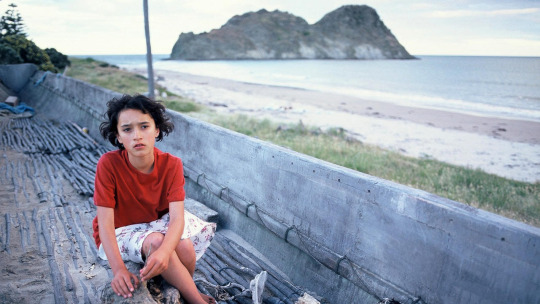
@theuncannyprofessoro
1 note
·
View note
Text
Roundtable 2: Avatar

The film Avatar, by James Cameron, can be interpreted as a symbolic representation of colonialism. The movie is set on the fictional moon of Pandora, where humans are seeking to extract a valuable mineral called "unobtanium" from the land inhabited by the indigenous Na'vi people. The symbolism of race in "Avatar" is primarily conveyed through the conflict between the human military complex and the Na'vi, who are depicted as an un-human, blue-skinned, species. The film uses these alien yet human-like creatures to represent the ways in which indigenous people are seen by colonizers as innately different, and therefore less valuable. Helen Addison-Smith writes that these alien others, seen as predatory because of their physical differences, represent how “techniques of de-individualisation and biological reification” are used as justification for colonization (28). The distinction of use of technology and weapons reifies the inequality between the Na’vi and the humans. The Na’vi are connected to their environment, using nature to power their society, while the humans use man made technology to conquer and destroy. The humans see this as an excuse to colonize and take their resources, clearly paralleling historical and current colonization of less technologically advanced areas for their natural resources. The Na'vi connection to Pandora is deeply spiritual, and their homeland is integral to their way of life. The film suggests that the destruction of a homeland not only results in environmental devastation but also cultural and spiritual loss for the indigenous population, as seen in many real world instances. The conflict in Avatar is exacerbated by the humans' exploitation of Pandora's resources, leading to environmental destruction. This can be seen as an allegory for environmental racism, where marginalized communities, often communities of color, bear the brunt of environmental degradation caused by colonizers industrial activities. On another note, the film has been criticized for employing the "white savior" trope, where a white protagonist becomes the leader of the oppressed indigenous people and plays a crucial role in their liberation. Avatar has been criticized for reinforcing a patronizing perspective where the marginalized group needs a heroic outsider to save them. Overall, this science fiction film is emblematic of larger issues regarding the use of racial superiority as justification for colonization.
youtube
2 notes
·
View notes
Text
Lionheart 🦁❤️
In Jane Bryce's "Signs of Femininity and Symptoms of Malaise: Contextualizing Figurations of 'Woman' in Nollywood", she discusses how the representations of women in Nigerian film are limited by the restraints of the patriarchy. She argues this problem is not specific to only Nigerian film, but rather representative of broader stereotypes of women's roles. Women in film tend to be represented as either power hungry rule breakers or submissive yet beautiful accessories. Media not only reflects society, but recreates and therefore enforces it. The movie Lionheart, by Genevivie Nnaji, reclaims this power of influence through developing complex female characters that symbolize more than the monstrous/perfect feminine. Ada, the main character, is determined to succeed in work, yet is not portrayed as overly aggressive. She is seen by her peers as respectable and ambitious, able to succeed both in work and in romance. Nnaji is able to portray Ada beyond feminine expectations, focusing on her career journey rather than her love life. This movie exemplifies the importance of female directors in creating media that will create and represent the nuances of womanhood.
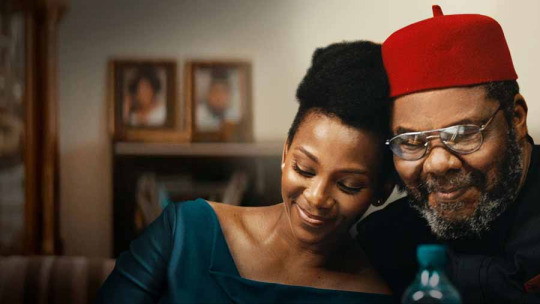
2 notes
·
View notes
Text
The symbol of the rope comes up again when the community is attempting to use rope to move the whale. The rope was not enough because it did not include every member, showing how inclusion is a necessary part of preserving tradition.
Whale Rider Response

For this week’s response, I’ll write about the scene where Paikea ties the rope back together, a scene where she proves herself valuable, yet she continues to be denied. He had just explained how the threads of the rope twisted together are the strength of their ancestors, and to demonstrate, he puts the rope in the engine to start it, and it breaks immediately, but Paikea is successful in her repair. In their article “Anthropocene Terror in Two Girl-Centered Narratives: The Leitmotifs of Mythological Time, Colonization and Monstrosity in the Films Whale Rider and Moana,” Belinda du Plooy writes that the film provides an “example of the changing role of, particularly female, youth in contemporary societies and the paradoxical complexities situated at the nexus where popular pedagogy and critical pedagogy merge and conflate” (7). In this early 2000s film, Paikea fights the tradition of only sons being able to succeed chiefs, even if his next direct descendant is a woman. I really loved this scene because she quietly ties the rope back together - not only repairing the motor, but making a symbolic statement that she understands the strength of her ancestors and has the ability to lead her community; she is capable of being chief, despite tradition, despite being a girl.
@theuncannyprofessoro
9 notes
·
View notes
Text
Whale Rider
The film Whale Rider, by Niki Caro, explores the theme of tradition clashing with modernity through the experience of Paikea, a young Maori girl. Paikea is eager to learn Maori tradition yet is left out of a large part of it because she is a girl. Her innate curiosity to enact tradition is a disgrace to tradition itself according to her grandfather Koro. Despite her love and respect for him, Paikea struggles against his rigid adherence to tradition and his reluctance to recognize her potential simply becuase of her gender. The film highlights the evolving dynamics of the family structure as it grapples with generational differences and the desire for continuity. The conflicts in the film arise becuase of certain gender expectations being placed on each of the characters that they fail to meet. "Whale Rider" suggests that while tradition is essential for cultural identity and continuity, there is room for evolution and adaptation. It celebrates the idea that qualities of leadership and strength can be found in unexpected places, transcending gender norms and challenging established traditions. The movie encourages a more inclusive and open-minded approach to tradition that can involve every generation, preserving cultural heratige while also adapting and evolving.

5 notes
·
View notes
Text
I think its a really good point that tradition, although important to passing down culture, can inhibit communication and understanding. Koro can not see beyond tradition to see his grand daughters value.
Whale Rider Response
My girl Paikea is resilient omg. Whale Rider (2002) dir by Niki Caro is a film centering on Paikea, a young Māori girl who struggles to prove to her grandfather that she is the next chief of their tribe. A scene where I could see the gaps between generations come together was an argument between Koro and Porourangi near the beginning of the film. Koro is angry after Porourangi tells his family that he’s been seeing another woman and that she’s pregnant. They both get into a heated argument about Porourangi’s obligations and his dreams. Porourangi didn’t live up to Koro’s rigid expectations and he tells Koro that he won’t let him treat another one of his children like he treats him and Paikea. Koro tells him that Paikea is of “no use” to him. Paikea hears this from the other room and runs away, upset. Porourangi follows her and comforts her, approaching her gently and lovingly, breaking away from the behavior that his father was exhibiting with him earlier.
Typing this as I watch if she dies I will never recover emotionally. Omg yay she didn’t.
Sometimes tradition gets in the way of communication between family members. In this case, Paikea was ignored and dismissed by her Paka. He couldn’t see past the tradition for a male chief and dismissed the idea of Paikea stepping up to the role even though she expressed interest in it. To assume the position and eventually gain the approval of Koro, she has to go to great lengths and jump through hoops (or ride whales). As the reading by Belinda du Plooy mentions, the magical realism employed in the films serves multiple purposes. One that I noticed was that it allowed for Paikea to be able to transcend the gender roles imposed by tradition and fulfill her destiny as the next leader. If it weren’t for the ancestors responding to her call and her riding the whale and calling the others back to the ocean, her Paka would not have been able to see what she saw the entire time, that she was the rightful leader.

3 notes
·
View notes
Text
But I'm A Cheerleader!
Sorry I am late on this post... I have covid:( Nonetheless, I would love to discuss one of my favorite movies ever! I see it as the ultimate rom com! Even though most romantic comedies are still seen as mainstream (and also seen as only for women), this genre "has been remodeled for niche audiences defined by ethnicity, sexual orientation or age" (Kaklamanidou, 1). But I'm a Cheerleader is about a cheerleader, Megan, getting sent to a conversion camp and ultimately finding love and accepting her identity. This movie makes comedy out of the atrocity and absurdity of conversion, turning a dark subject into something viewers can relate and laugh with.

The film hammers in the societal pressure to conform to traditional gender roles and heteronormative expectations through forcing those at the camp to learn the expectations of their gender. It satirizes the idea that one's sexual orientation can be changed or "cured" through conversion therapy. But I'm a Cheerleader"places a strong emphasis on the importance of being true to oneself and resisting societal pressures to conform. This message of self-acceptance adds a layer of depth to the romantic comedy genre, going beyond the typical romantic plotlines.
This movie has a predominatley white cast, except for a couple characters. While they never explicitly mention race, the characters of color add a lot to this film. RuPaul is in this movie as the head of the camp, making this camp even more satirical. He is teaching boys how to throw a football while checking out the abs of the gardener. The comical duality of his character shows how gender identity is a way to perform sexual identity. He teaches the kids at the camp how to perform their gender roles in order to be perceived as straight, all while most of them still remain true to their sexual desires in private.
youtube
The film uses bold and colorful visuals, embracing a campy aesthetic that complements its satirical tone. This departure from the more typical, polished look of rom-coms contributes to its uniqueness within the genre. I love how over the top this film is, not afraid to embrace the comedy in the very real issue of making gay kids learn to be straight.
There are other BIPOC at the camp, just none of them are other main characters. Although this film does not say much about race, it was one of the first queer rom coms, breaking boundaries about expectations of what romance looks like. I think it could have embraced racial relations in the queer community better, which depicts the continued struggle of inclusion for all within queerness.
1 note
·
View note
Text
Does this movie ever explicitly mention race? Also how does the non chronicle storytelling break rom com troupes?
Roundtable Presentation: Someone Great

In Someone Great (2023), Jenny, a music journalist on the brink of her dream job at Rolling Stone in San Francisco, faces an unexpected breakup with Nate, her partner of nine years, sending her world into disarray. Turning to her close-knit circle of friends, Erin and Blair, Jenny initiates a farewell escapade of going to a concert last-minute before she moves away. The trio go through much effort to obtain concert tickets, though they end up fighting at the concert and parting ways. In the chaos of the crowd, Erin and Blair lose Jenny, only to find her much later on at a site of much emotional history with her newly ex-boyfriend Nate. Departing together, the women reaffirm their unshakeable bond, pledging to nurture their friendship despite Jenny's impending move. The day thus becomes a testament to their enduring connection and the strength found in companionship.
youtube
The film re-examines traditional plot structures within romantic comedies, instead choosing to simultaneously depict the meet-cute and 9-year relationship of Jenny, played by Gina Rodriguez, and Nate, played LaKeith Stanfield, as well as their breakup. The film instead starts at the end of the relationship, while still exploring the emotional bonds within the couple. Although both leads are played by actors of color, rarely is their ethnic or racial identity "'seen', commented on, or used by the narrative" (Kaklamanidou, 148) so as not to "other" them. In fact, although several actors within the film's ensemble are people of color, their complexities of their race and ethnicity are not explored within the movie, allowing them to be presented as more palatable for global audiences, unsurprisingly for the genre of romantic comedies.
Jenny and Nate's breakup is catalyzed by Jenny's new job offer for her dream job at Rolling Stone, which will require her to move to San Francisco. In contrast, throughout their relationship, Nate seems to have an ongoing problem figuring out what to do in his life. The film thus subverts the typical patriarchal notions of the workforce, as Jenny as a woman is moving up in her industry, and "empowers the Latina heroine and proves that the 'other' can have the same opportunities in the modern world" (Kaklamanidou, 146).
The film still has its problems surrounding white heteronormativity, as Blair, and her lover, both of whom are white, seem to get much more screen time than Erin and her girlfriend, both of whom are black. In fact, although we see several encounters between Blair and her lover, we are robbed of the chance to explore the emotional depth of the relationship between Erin and her girlfriend, under the excuse of Erin still learning to deal with her romantic emotions.
Despite this, I still really enjoyed this movie, and the friendship between Jenny, Erin, and Blair. I think the movie does an incredible job of depicting the extent of Jenny and Nate's 9-year relationship, as well as what it means to be in love, and what comes after.

4 notes
·
View notes
Text
Does Ellie gain confidence in her queer identity throughout the movie? What motivates her to speak her unspoken desire?
The Half of It (2020)
"The Half of It" unfolds in the fictional town of Squahamish, where Ellie Chu, an introverted and academically gifted Chinese-American teenage girl, makes a living writing essays for her classmates. When Paul Munsky, the friendly jock, approaches Ellie for help with expressing his feelings for Aster Flores, the girl they both secretly admire, an unexpected friendship develops.
youtube
The plot takes a twist as Ellie, who's struggling with her own secret affection for Aster, navigates the complexities of love, identity, sexuality, and friendship. The film beautifully explores the trio's dynamics, challenging traditional romantic tropes as they form an unconventional bond that transcends societal expectations. As Ellie ghostwrites love letters for Paul to win Aster over, the narrative evolves into an examination of self-discovery, acceptance, and genuine relationships.
Alice Wu's "The Half of It" stands out for its nuanced approach to diversity and its subversion of genre norms. One notable aspect is the portrayal of non-white characters that avoid the trap of being reduced to stereotypes or signifiers of 'otherness.' Leah Lewis, in the role of Ellie Chu, embodies this transcendence as her character's experiences and emotions become universal, resonating beyond cultural boundaries.

Rather than relying on exoticized or token representations, the characters in "The Half of It" navigate universal themes of love, identity, and self-discovery. The narrative becomes a mirror reflecting the shared human experience, making it accessible and relatable for audiences worldwide.
"The Half of It" further distinguishes itself from conventional romantic comedies by subverting the expected romantic pairings. In a departure from the typical narrative arc where the shy, introverted girl would fall in love with the charming jock, the film takes another route. Ellie's journey is not centered around a romantic relationship with Paul but rather an exploration of her own identity and a realization of her feelings for Aster. This deviation challenges the often-predictable formula of romantic comedies and introduces a queer narrative.

Ellie's unspoken affection for Aster becomes a central theme, and the film beautifully navigates the complexities of same-sex attraction in a small, conservative town. Instead of conforming to the expectations of a heteronormative storyline, "The Half of It" explores the challenges and nuances of LGBTQ+ experiences, providing a much-needed representation within the romantic drama genre.
The decision to maintain Paul and Ellie as friends at the end of the film further reinforces the narrative's commitment to authenticity. Rather than forcing a romantic resolution between the main characters, the film prioritizes the importance of deep, platonic connections. This departure challenges the notion that every close relationship between a male and female character must inevitably turn romantic, offering a more realistic portrayal of the complexities of human connection.

Despite the film's diversity, the casting still somewhat centers around whiteness. Although certain characters challenge some stereotypes, the narrative framework remains within the confines of a predominantly white cultural context. This dichotomy raises questions about the depth of diversity in the film industry, emphasizing the need for more inclusive storytelling that goes beyond surface-level representation.
All in all, "The Half of It" distinguishes itself in the romantic comedy genre by subverting conventions and exploring themes of love, queerness, identity, and friendship. While transcending racial and ethnic origins, it also prompts reflection on the industry's ongoing journey towards more authentic and inclusive representation.

4 notes
·
View notes